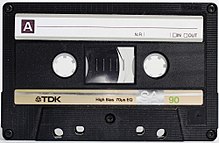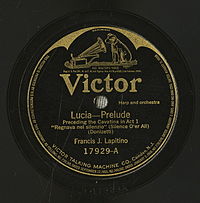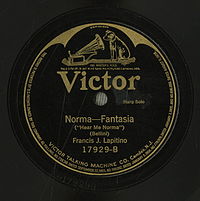This article needs additional citations for verification. (June 2022) |

The A-side and B-side are the two sides of phonograph records and cassettes, and the terms have often been printed on the labels of two-sided music recordings. The A-side usually features a recording that its artist, producer, or record company intends to be the initial focus of promotional efforts and radio airplay, with the aim of it becoming a hit record. The B-side (or "flip-side") is a secondary recording that typically receives less attention, although some B-sides have been as successful as, or more so than, their A-sides.
Use of this language has largely declined in the 21st century as the music industry has transitioned away from analog recordings towards digital formats without physical sides, such as downloads and streaming. Nevertheless, some artists and labels continue to employ the terms A-side and B-side metaphorically to describe the type of content a particular release features, with B-side sometimes representing a "bonus" track or other material.[1]
- ^ Plasketes, George (28 January 2013). B-Sides, Undercurrents and Overtones: Peripheries to Popular in Music, 1960 to the Present. Ashgate Publishing.

